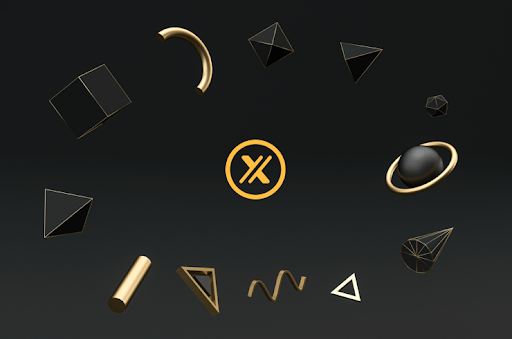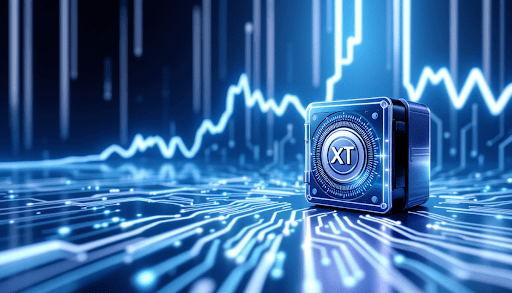This article will introduce you to the basic concepts of blockchain and analyze different types of blockchain.
Chuỗi khối technology is changing the way multiple industries operate with its disruptive power, from finance to healthcare and beyond. Although many people associate blockchain with mật mãcurrencies such as Bitcoin and Ethereum, its applications have long gone beyond the scope of digital currencies. In this article, we will take you through the basic concepts of blockchain, analyze different types of blockchains, and delve into the uniqueness of XT Smart Chain and its native token, XT Token .
Image Credit: MIT News
What is blockchain? Blockchain types explained
Chuỗi khối is a decentralized digital ledger that records data in a secure, transparent and tamper-proof manner. Its core technology relies on a network of computers (or nodes) that work together to verify and store transaction data and record the data in chain-like blocks. Each block is closely linked to the previous block through encryption technology, forming a secure and tamper-proof record chain.
According to different application requirements, blockchain is mainly divided into the following three types:
-
Chuỗi công khai : completely open, anyone can participate freely without permission, suitable for scenarios that require transparency and decentralization.
-
Private chain: controlled by a single institution or organization, closed and with clear permissions, suitable for internal management needs of enterprises.
-
Consortium chain: jointly managed by multiple organizations, it combines the openness of the public chain and the privacy of the private chain, and is suitable for cross-institutional cooperation scenarios.
Each type of blockchain has its own unique advantages and applicable scenarios, providing diverse solutions for different industries.
Image Credit: AIFT
Comparison of different types of blockchain
Blockchain technology has developed into various forms according to different application requirements and user scenarios. It is mainly divided into three types: public chain , private chain and alliance chain.
-
Chuỗi công khai
Public chains are fully decentralized networks that anyone can freely participate in without permission. This openness makes them ideal for scenarios that require high transparency and broad public participation. Typical examples include Bitcoin and Ethereum. The main applications of public chains include cryptocurrencies, decentralized finance (DeFi), and non-fungible tokens (NFTs), providing global users with a platform for transactions and innovation without intermediaries.
-
Private Chain
Unlike public chains, private chains have strictly limited participation rights and are only open to specific users or organizations. Private chains are managed by a single entity or organization, so they provide stronger privacy protection and faster transaction speeds. Although they lack the decentralization and transparency of public chains, private chains excel in internal enterprise applications, such as supply chain management and financial record systems, and can meet efficient and secure business needs.
-
Consortium Chain
A consortium chain is a semi-decentralized blockchain managed by multiple organizations. It enables controlled data sharing and efficient transaction verification among multiple parties, combining the partial openness of a public chain with the privacy of a private chain. Consortium chains are particularly suitable for industries that require multi-party collaboration, such as finance, healthcare, and logistics, providing reliable technical support and data transparency for cooperation between enterprises.
Image Credit: CDO Trends
What is a public chain?
A public chain is a completely open blockchain network that anyone can freely participate in without approval. This network operates based on a decentralized model and is controlled by no single organization. Users can choose to become validators, miners, or ordinary participants to jointly maintain the operation of the network. Public chains usually use consensus mechanisms such as proof of work (PoW) or proof of stake (PoS) to ensure data integrity and network transparency.
The openness and transparency of the public chain make it particularly suitable for application scenarios that require trustless interaction, such as cryptocurrency transactions, decentralized applications (dApps), and transparent voting systems. Its global nature not only promotes technological innovation, but also attracts more users to actively participate, providing developers with a broad platform to create global solutions.
Characteristics of public chains
The public chain occupies an important position among many types of blockchains due to its unique characteristics, which give it wide application potential.
-
Decentralization: The network is jointly maintained by all participants, and power is completely decentralized, ensuring that no single organization can dominate the operation of the network.
-
High transparency: Transaction records are completely public and stored in the blockchain ledger. Everyone can view and verify them at any time, which increases the credibility of the system.
-
Immutability: Once a transaction is written into the blockchain, it cannot be modified or deleted, providing a highly reliable and tamper-proof data recording mechanism.
-
Strong security: Through advanced encryption technology and consensus mechanism, the network can effectively resist attacks and unauthorized changes, ensuring the security and integrity of data.
-
Openness and inclusiveness: As long as there is an Internet connection, anyone can access and use the public chain network. This openness promotes widespread participation and collaboration among users around the world.
Image Credit: GetSmarter
Application scenarios of public chains
With its flexibility and strong innovation capabilities, public chains have demonstrated extensive application value in multiple industries:
-
Cryptocurrency: Public chains such as Bitcoin and Ethereum, as the infrastructure of decentralized digital currencies, provide users with a secure and transparent peer-to-peer transaction experience, completely breaking away from the limitations of traditional intermediaries.
-
Decentralized Finance (DeFi): Platforms that run on public chains (such as Uniswap and Aave) provide a variety of financial services including lending and trading, without relying on banks or third parties, creating a more efficient and free financial environment for users.
-
Supply chain management: Public chains can provide transparent and traceable commodity circulation records, helping companies monitor commodities from source to delivery, thereby improving the operational efficiency and credibility of the supply chain.
-
Voting system: The blockchain-based voting system makes the election process more transparent, while effectively preventing tampering and ensuring the fairness and credibility of the election. It is a powerful tool for future digital democracy.
-
Medical field: Through the public chain, medical records can be securely stored and interoperable, which not only ensures the privacy of patient data, but also gives patients full control over their own health data, optimizing the information management model of the medical industry.
The openness and transparency of the public chain make it a key support for technological upgrades and innovations in multiple industries, providing global users with reliable, secure and efficient solutions.
Advantages of public chains
With its unique characteristics, the public chain has become the first choice for decentralized applications and groups seeking transparent and trusted technologies.
-
Decentralized trust mechanism
The public chain distributes the control of the network to all participants, getting rid of the dependence on centralized institutions such as banks and governments. This trustless mechanism ensures the fairness and transparency of the system, and no single entity can interfere with or manipulate the operation of the network.
-
Transparency and traceability
Every transaction on the public chain is recorded in a public ledger that can be accessed and verified by anyone at any time. This transparency effectively reduces the possibility of fraud and corruption. For example, in the field of supply chain, the public chain can help all parties track the source, flow process and authenticity of products, enhancing efficiency and trust.
-
Security and immutability
The public chain uses advanced encryption algorithms to ensure data security. Once a transaction record is confirmed and written into the blockchain, it cannot be changed or deleted, ensuring the integrity of the data. This feature is particularly important for the medical industry, providing highly reliable and tamper-proof medical data storage.
-
The popularity of globalization
As long as there is an Internet connection, anyone can access and participate in the public chain network. Both individuals and enterprises can integrate into the blockchain ecosystem. This inclusiveness provides convenience for groups around the world that lack traditional financial services and greatly promotes the development of inclusive finance.
-
Open source and innovation-driven
The open source nature of the public chain provides developers with a broad space for innovation, enabling them to easily develop decentralized applications (dApps) and protocols. Taking Ethereum as an example, the public chain has promoted the rapid rise of decentralized finance (DeFi) and NFT, demonstrating its huge potential in finance, art, technology and other fields.
With decentralization, transparency and security as its core advantages, the public chain has brought technological changes and new development possibilities to multiple industries, becoming an indispensable infrastructure in the digital age.
Image Credit: BIP. Monticello Consulting Group
Risks of Public Chains
Although public chains have significant advantages, they are not without risks:
-
Scalability issues
Public blockchains often face scalability issues due to their decentralized nature. High transaction volumes can lead to network congestion, slower processing times, and increased transaction fees. For example, Ethereum has been criticized for high mining fees during times of high demand.
-
Energy consumption
Consensus mechanisms such as Proof of Work (PoW), like the one used by Bitcoin, require a lot of computing power, resulting in high energy consumption. This environmental impact has attracted criticism and led to the adoption of alternatives such as Proof of Stake (PoS).
-
Regulatory challenges
The decentralized and anonymous nature of public blockchains may conflict with government regulations. Uncertainty about cryptocurrency laws and policies may affect the adoption and trust of public blockchain systems.
-
Privacy issues
While public blockchains provide pseudo-anonymity, they do not fully guarantee privacy. Transactions are visible to anyone, and through blockchain analysis, addresses can sometimes be linked to real-world identities, raising concerns about confidentiality.
-
Illegal activities
The anonymity provided by public blockchains has been used for illegal activities such as money laundering and conducting illegal transactions on the dark web. These activities have damaged the reputation of blockchain technology and attracted the attention of regulators.
Through technological advancement and regulatory clarity to address these risks, public blockchains can continue to evolve and provide transformative solutions for a wide range of industries.
Analysis of different public chains
Blockchains have become the cornerstone of the decentralized world, powering a variety of applications, including cryptocurrencies, smart contracts, and more. They are decentralized, open networks that allow anyone to participate without permission. Below, we will take a deep dive into some of the most famous public chains and their unique characteristics, as well as emerging players like XT Smart Chain , which are shaping the future of blockchain technology.
Public chain comparison
Each public blockchain has its own unique strengths, weaknesses, and areas of concern:
Public blockchains such as Bitcoin, Ethereum, and XT Smart Chain have revolutionized the way we think about trust, transparency, and decentralization. Each blockchain network brings unique value to the ecosystem, empowering users and developers to build applications that rebất chấpne industries. As blockchain technology continues to evolve, these networks will play an important role in shaping the future of decentralized innovation.
Image Credit: XT Smart Chain
What is XT Smart Chain?
XT Smart Chain (XSC) is an advanced decentralized public blockchain designed to provide high performance, low cost and energy efficiency. As part of the XT.com ecosystem, XT Smart Chain bridges the gap between traditional public blockchains and modern needs, solving challenges such as scalability and transaction speed. Utilizing the High Performance Proof of Stake (HPoS) consensus mechanism, it ensures faster and more efficient transactions than many other crypto exchange integrated blockchains.
XT Smart Chain is not just a blockchain network, but also an innovation hub that promotes developer-friendly applications, facilitates seamless transactions, and supports the prosperity of decentralized applications (dApps) and projects in the crypto space.
Main features of XT Smart Chain
-
High Transaction Throughput XT Smart Chain is built for high performance, with transaction concurrency for fast processing. Block generation time is as low as 3 seconds, ensuring a smooth and reliable user experience, which is especially critical for a cryptocurrency exchange like XT.com.
-
Low Transaction Costs One of the outstanding features of the XT Smart Chain is its affordability. By leveraging the meta-transaction feature, transaction fees are significantly reduced, making it easier for developers and users to use.
-
Seamless cross-chain compatibility XT Smart Chain supports asset transfers across major blockchains (including Ethereum, etc.) for interoperability. This feature simplifies the flow of assets between networks and improves the user experience for developers and traders on cryptocurrency exchanges.
-
Developer-friendly environment XT Smart Chain is fully compatible with Ethereum RPC interface and related SDK. Developers can seamlessly migrate their applications to XSC and take advantage of its powerful infrastructure.
-
Decentralized and energy-efficient The HPoS consensus mechanism is not only energy-efficient but also highly decentralized, ensuring network security and scalability.
Image Credit: OneSafe
What is the XT token?
XT tokens are the ecological tokens of the XT Smart Chain and play a key role in driving all operations. From transaction fees to incentivizing developers and validators, XT tokens enable decentralized applications, promote a thriving ecosystem, and support transactions on the XT.com cryptocurrency exchange.
Application scenarios of XT tokens
-
Lower Transaction Fees Users can use XT tokens to reduce transaction fees on the XT.com platform, providing users with an affordable trading solution and incentivizing higher trading volumes.
-
Exclusive Features and Events XT token holders gain access to exclusive features such as advanced trading tools and invitations to special events within the XT.com ecosystem.
-
Governance and Decision-making XT token holders can actively participate in the governance process, such as voting on ecosystem upgrades, project funding, and other strategic decisions.
-
Staking and Rewards Users can stake XT tokens within the XT Smart Chain ecosystem and receive rewards for supporting network operations and promoting security and stability.
-
Decentralized Application Support On XT Smart Chain, XT tokens are used to develop and run decentralized applications (dApps), enabling creators to launch and maintain innovative blockchain projects.
-
Trading and Liquidity XT tokens are tradable on the XT.com exchange and support liquidity within the XT Smart Chain ecosystem, facilitating a seamless trading experience and driving market activity. Liquidity within the ecosystem facilitates a seamless trading experience and driving market activity.
By providing these diverse use cases, the XT token enhances user engagement, promotes innovation, and plays a core role in the growth and sustainability of the XT ecosystem.
Performance of XT Mã thông báoS
Since its launch, the XT token has demonstrated a dynamic price trajectory, reflecting market trends, investor interest, and ecosystem growth. Here are the key highlights of its price history and impact valuation:
All-time highs and all-time lows
-
All-time High: The XT token reached a peak price of $20.46 on November 15, 2021, driven by strong market demand and ecosystem development.
-
All-time Low: The lowest recorded price of XT was $0.936537 on June 4, 2019, during its early stages.
-
Current Prices and Chợ Statistics (as of December 3, 2024)
-
Current price: $6.43
-
24-hour volume: $53,303,179
-
Circulating supply: Approximately 6.05 million XT
-
Market value: $36,432,294
Factors Affecting XT Token Price
-
Demand and supply dynamics
High Demand: Increased investor interest and ecosystem adoption drive the price of XT tokens higher.
Supply Constraints: A reduced circulating supply can cause upward pressure on prices, while an increase in supply can reduce prices.
-
Market conditions
The overall sentiment and trend of the cryptocurrency market significantly affects the XT token price . Bullish markets generally lead to price increases, while bearish conditions can suppress growth.
-
Ecosystem Growth
The success and expansion of the XT ecosystem, including new projects, decentralized applications (dApps), and strategic partnerships, plays a key role in driving demand for XT tokens.
-
Regulatory environment
Regulatory changes or announcements affecting the cryptocurrency industry could affect investor confidence and, therefore, the XT token price.
The importance of XT Smart Chain and XT tokens
XT Smart Chain and its XT token are critical in driving adoption of blockchain technology through scalability, affordability, and developer-friendly tools. By enabling seamless cross-chain interactions and fostering innovation, XT Smart Chain is poised to become a leader in the decentralized space.
Whether you are a developer, investor or blockchain enthusiast, the XT Smart Chain ecosystem provides you with tremendous opportunities to participate in cutting-edge blockchain technology and benefit from the growing value of the XT token.
Tóm lại là
Chuỗi khối technology, especially public chains like XT Smart Chain , is revolutionizing the way we transact, innovate and interact in the digital age. XT Smart Chain stands out for its high performance, energy efficiency and developer-friendly environment, while XT tokens drive the development of the ecosystem through its diverse application scenarios and market potential.
BẰNG blockchain technology continues to evolve, platforms like XT Smart Chain are leading the way in creating scalable, secure, and user-friendly solutions to meet the needs of a decentralized world. If you are interested in investing or participating in this growing ecosystem, keep an eye on the XT token and its development trajectory.
This article is sourced from the internet: Everything you need to know about blockchain















